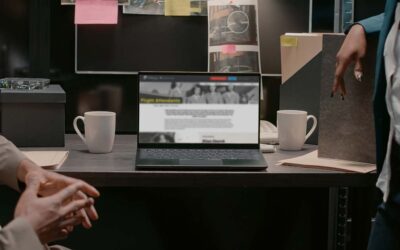How to Determine Museum Grant Suitability: A Check List

Rachael Cristine Woody
Last week we reviewed the difference between grant opportunity eligibility versus suitability, and outlined the eligibility checklist. This week we continue with museum grant suitability and the suitability checklist.
Suitability Checklist
Now that you know you’re eligible to apply, it’s time to determine if your grant project is a suitable match for the grant award.
- Is the award range appropriate in respect to the award amount the museum is seeking? Sometimes it’s OK if the award amount is too little for the full project as long as you can feasibly acquire the total funding needed and have a plan for how before you apply. If you don’t have a plan for how to acquire the remaining funding, it will be hard to make a compelling case to the granting agency as to why they should partially fund your project. A partially funded project isn’t likely to be completed successfully—and it’s a risk that many granting agencies don’t want to take.
- Are the project costs eligible costs under the grant? If the award amount is suitable, we next need to check that the project costs are eligible costs under the grant. For example, some grants won’t fund operational costs such as staff time, but they will fund contractors, consultants, or internships. Or, some grants may fund hardware and software, while other grants don’t allow one or both. Since project costs are the entire reason you’re applying, it’s crucial to make sure those project costs are eligible under the grant.
- Will the type of funding be feasible for your museum? Or, will it be a burden you may not have the capacity for? There are several types of grant funding models out there that require a match. Matches can take various forms such as cash or in-kind, and some require the match up front while others require it at the end of the grant (such as a challenge grant). If the grant opportunity you’re vetting requires a match, it’s critical to make sure the museum can meet that match requirement. Otherwise, the museum may have to return the grant money.
- Is the application deadline feasible (not too far away and not too soon)? Grant project construction and application take time. Do you have enough time to thoughtfully and accurately apply? Or conversely, is the grant not available for application until one or two years out? Can the project wait that long?
The Concise Suitability Checklist
Now that you understand each checklist option, here’s the quick-glance, yes/no version to use during your grant opportunity review (below). Remember, if you answer “No” to any of these points of suitability then your museum project is not a fit for the grant opportunity. While you may still technically be able to apply because your museum project meets eligibility requirements, you shouldn’t apply because it’s not a good fit for your museum project.
- Is the award range appropriate in respect to the award amount the museum is seeking?
- Are the project costs eligible costs under the grant?
- Will the type of funding be feasible for your museum to manage?
- Is the application deadline feasible (not too far away and not too soon)?
Conclusion
By paying attention to grant opportunity eligibility and suitability markers, museum staff can avoid wasting time (a finite resource) and lower the risk of applying for the wrong grant instead of a grant that may be better suited. When reviewing grant opportunities, make sure to have your eligibility and suitability checklist next to you in order to quickly and effectively create a list of grant opportunities that fit your museum and your project.

Rachael Cristine Woody
Consultant, author, and blogger Rachael Cristine Woody advises on museum strategies, collections management, grant writing and the future of museums for a wide variety of clients. Read Rachael’s book for Lucidea Press, A Survivor’s Guide to Museum Grant Writing. And check out Lucidea’s market leading CMS, Argus, that empowers museum professionals to make their collections more visible, accessible and engaging than ever before.
Similar Posts
Exploring Self-Determinate Multiple Pathways: An Example of Digital Storytelling
Discover how self-determinate multiple pathways offer flexible interactive storytelling in museum exhibits. Learn from the Tenement Museum’s ‘Your Story Our Story.’
Digital Museum Storytelling Example: A Look at Self-Determinate Linear Pathways
Self-determinate characteristics on a linear pathway go beyond brief sidebar topics and instead offer alternative ways to navigate the linear pathway.
Digital Storytelling in Museums: The Prescriptive Linear Pathway in Action
Rachael Woody emphasizes that storytelling is key to engaging audiences with collections. One effective approach? The prescriptive linear pathway—a simple yet powerful method for guiding visitors through digital exhibits.
The CMS Digital Exhibit and Story Pathways
Digital exhibits provide powerful ways to engage audiences but choosing the right story pathway is key. Explore how different exhibit structures—linear vs. multi-pathway—shape the visitor journey.






Leave a Comment
Comments are reviewed and must adhere to our comments policy.
0 Comments